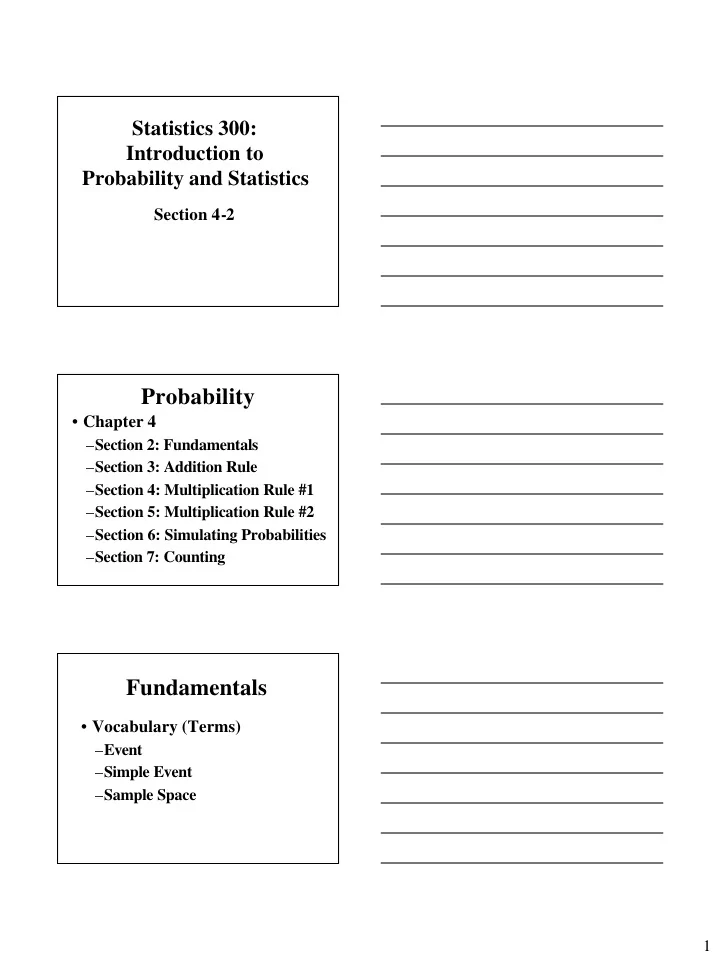

Statistics 300: Introduction to Probability and Statistics Section 4-2 Probability • Chapter 4 – Section 2: Fundamentals – Section 3: Addition Rule – Section 4: Multiplication Rule #1 – Section 5: Multiplication Rule #2 – Section 6: Simulating Probabilities – Section 7: Counting Fundamentals • Vocabulary (Terms) – Event – Simple Event – Sample Space 1
Example Procedures • Roll a die; record value • Roll 2 dice; record sum • Survey 50 people; count “no’s” • Select 200 people at random; take heights; record average Event • The result of a procedure • Examples: – Value of die is 4 – Sum of 2 dice is 10 – The average height of 200 people is 64.83 inches Events: Simple or Compound • Simple – Can only occur in one way • Compound – Can occur in multiple ways 2
Events: Simple or Compound • Examples: – Value of die is 4 : simple – Sum of 2 dice is 10 : compound – The avg. height of 200 people is 64.83 inches : compound Sample Space • The collection of all possible simple events • See EXCEL example for rolling two dice Notation for Probabilities • “P” denotes “the probability of” • A, B, C, etc. denote specific events • So we read “P(A)” as “the probability of A” 3
Probability Notation (try some on overhead) What is a Probability? • No definition is universally accepted • Mine: A relative frequency that has not happened yet • Sophisticated math definitions • Degree of belief Determining Probabilities • Experience – Rule 1: Observe the relative frequency over many trials • Logic – Rule 2: Deduce the relative frequency based on principles 4
Experience: Rule 1 • Relative Frequency Approximation of Probability • Conduct a procedure many times; observe the relative frequency • P(A) = (count A / total count) Try this: If I drop my right shoe from shoulder height, what is the probability that it will land upright? Logic: Rule 2 • Classical Approach to Probability • Determine the number of ways that event “A” can occur • Determine the number of all possible outcomes • P(A) = (ways for A)/(all ways) 5
Try this: What is the probability that I will get a 6 when I roll a die? Complementary Events • The complement of event “A” consists of all possible outcomes for which “A” does not occur • Denoted “A” with a line over the top • P(A) is “Probability of not A” – A = a woman is selected, then – A = a woman is not selected 6
Recommend
More recommend